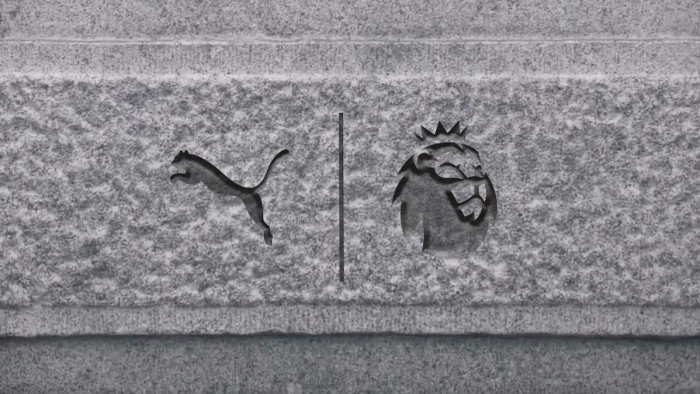Ask a fan of a certain age to name their all-time favourite football kit, and a disproportionate amount of them will identify a strip from the late eighties and early nineties.
Traipsing round the site at Farr Festival last month, it was impossible not to notice the sheer amount of classic football shirts on display. From the famous Arsenal ‘chevron’ away shirt, to the Manchester United blue ‘snowflake’ number and a variety of stylish European kits ranging from vintage Lazio to old-school Bayern Munich, roughly every third or fourth head was sporting a strip.
The trend extends beyond Britain’s muddy fields; football shirts aren’t just signifiers of allegiance—they’re standalone fashion statements. But what’s sparked it?
Is it a collective nostalgia trip, fans reviving and idealising the period in which they were first enchanted by the game? Or because, even now, the kits in question have genuine aesthetic merit?
“You know what, it’s a really interesting question. I think it’s a bit of both on that one.” So says Neal Heard. Neal is something of an authority on the subject, having penned The Football Shirts Book – The Connoisseur’s Guide, curated the recent Art of the Football Shirt exhibition in Shoreditch, and extensively Instagrammed his love of shirt design.

“I’ve noticed that the eras people like most go into strata of when they were younger,” he says. “People in their fifties always harp on about the seventies, and it goes on like that. I realised that, in my book, I actually hark back to my youth, which was more in the early eighties, so I was part of that whole trend without really realising it.”
When it comes to the jerseys of the more recent past, Neal reckons that while there’s definitely a desire to hark back to a coming-of-age, the reasons that shirts from the late-eighties and nineties are so revered is that they were borne of an era that was design-led. These were football shirts as fashion statements.
It was a time of experimentation – check the Hull City ‘tiger stripes’ kit and the ‘blue diamond’ England third kit – and freedom. How come, then, kit manufacturers were given the avant-garde nod?

Neal has a few theories on the subject. “Football shirts, like everything cultural, come in cycles and trends,” he says, pinpointing the shirts sported by Holland and West Germany in the Euro 1988 semi-finals as the epoch of the trend. “Before that, nobody had really used graphical shirts. There’d been hoops and pin stripes and stuff like that, and Le Coq Sportif produced shirts with shadow stripes in the early eighties, [but] ‘88 was a groundbreaker for crazy patterns.” A combination of changing materials—with shirts moving beyond plain old cotton—and what Neal describes as “an art-school approach,” created fertile ground for sartorial creativity.
Football and wider culture were beginning to coalesce. Umbro, for example, found themselves caught up in the acid house revolution. With the company headquarters being based in Manchester, it wasn’t surprising that the city’s clubs had an impact on their output.
“I’m old enough to remember when rave came on the scene – I started as a football casual, and all the football casuals turned into ravers,” Neal remembers. “Some of their designers would have been at the Hacienda, and would have seen what was going on at the time.” That football and acid house went hand in hand might go some way to explaining why dance festivals today teem with kit-clad clubbers.
Like most things, football shirts come in cycles. The staid seventies made way for the flash, bang, wallop of the early nineties, and today, twenty-five years on from shirts like this, we seem to have fallen back into conservative choices. Rampant commercialisation and the fear of lost-profits has resulted in a slightly bland landscape. After all, why would clubs want to risk shareholder investment for the sake of a post on Hypebeast?

“I do think that the brands are just a little bit behind the curve,” Neal says, considering the current vogue for retro design, which hasn’t been reflected in changes to modern kits. “They aren’t giving the public what they want in that sense, and I think there’s a kind of disconnect.” So why ignore this clear appetite for more Wavey Garms-inclined releases?
“Some brands probably listen too much to their more traditional fans - the people who say ‘You can’t play with the colours, you can’t do that’ sort of thing. They are scared of worrying those people off.”
The onset of the new millennium saw a return to puritanism, to “proper kits.” Umbro, again, ushered in a new era of shirt design, unleashing the perfectly plain England shirt 1999. That template – a slim colour palette, a badge, a button-down collar – became par for the pitch.
Despite being an initial fan of the move towards subtle simplicity, Neal finds the resulting repetitions ever-so slightly wearing. “I think a lot of us are screaming out for something new,” he says. He predicts that manufacturers have cottoned on to the retro-boom and that we’ll shortly see a return to the acid house era any minute now. “There are,” he promises, “going to be some crazy shirts coming out.”
There is, Neal thinks, a new dawn of soon-to-be iconic football shirts on the horizon—it just depends on one of the big boys being brave enough to embrace a truly bold design. “If a Champions League teams goes for an iconic shirt with a bit of colour and a bit of pattern to it,” he says, “they could really clean up because it’d be remembered for years to come.”
Sure, perspective, nostalgia, and an association with magic club moments are important, but the really iconic shirts don’t forget one simple thing: they’ve got to look great, too.
You can follow Neal Heard on Instagram, while The Football Shirts Book is available here
Latest
Related Reviews and Shortlists










